Å finne riktig ski-størrelse kan gjøre eller ødelegge tiden din i bakkene. Her er greia: kortere ski er lettere å kontrollere, bedre for raske svinger, og perfekte for nybegynnere eller skiløpere som ønsker mer smidighet. Lengre ski er flotte for fart og stabilitet, men krever mer ferdighet og styrke. Bredde betyr også noe - smale ski er ideelle for preparerte løyper, mens bredere takler POWDER bedre.
Raske Høydepunkter:
- Short Skis (140–160 cm): Enklere å manøvrere, tilgivende for nybegynnere.
- Lang Skis (170–190 cm): Stabil i høye hastigheter, bedre for dyp snø.
- Smale Bredde (70–85 mm): Presis carving på hardpakket snø.
- Bred Bredde (105+ mm): Flyter på POWDER, mindre smidig på preparerte løyper.
Snowfeet* ryster opp med kompakte, lette ski (så korte som 38 cm!) som fungerer på tvers av terreng. De er lette å bære, enkle å bruke med vanlige støvler, og perfekte for å lære eller bare ha det gøy. Enten du er nybegynner eller erfaren, kan kortere ski bli ditt nye favorittutstyr.
Vil du slippe unna bulk og nyte skikjøringen mer? Snowfeet* kan være svaret.
Hvilke ski skal jeg kjøpe? | Hvilken skibredde bør jeg velge? | Hvilke ski bør jeg kjøpe? | Skilengde
Grunnleggende om skistørrelse: Lengde og bredde forklart
Å finne riktig skistørrelse er ikke rakettforskning, men det gjør en verden av forskjell i bakken. To tall betyr virkelig noe: lengde (tupp til hale) og bredde (midjemål). Treffer du disse, forbedres skiopplevelsen dramatisk. Feiler du? Vel, la oss bare si at dagen på fjellet kan bli frustrerende.
La oss bryte ned hvordan lengde og bredde påvirker turen din.
Hvordan skilengde fungerer
Skilengde måles i centimeter, fra tupp til hale. Selv om tradisjonelle tommelfingerregler finnes, har moderne skidesign og varierte skistiler gjort disse retningslinjene mer fleksible.
- Kortere ski (140–160 cm): Perfekt for raske svinger og tett kontroll. De er tilgivende for nybegynnere og krever ikke like mye innsats å manøvrere.
- Lengre ski (170–190 cm eller mer): Disse skinner i høye hastigheter og i dyp POWDER. De er stabile, men krever mer styrke og ferdighet å håndtere.
Vekten din spiller også en rolle: tyngre skiløpere trenger lengre eller stivere ski for å opprettholde grep, mens lettere skiløpere kan holde seg til kortere alternativer. Hvis du nettopp har begynt, er kortere ski din beste venn – de er lettere å kontrollere og straffer ikke feil like mye. For avanserte skiløpere tilbyr kompakte alternativer som Snowfeet* korte ski en unik blanding av smidighet og stabilitet, noe som gjør dem til en favoritt for allsidig ytelse.
Nå som du har lengden på plass, la oss snakke om hvordan bredden finjusterer skiens ytelse.
Hvordan skibredde fungerer
Skibredde handler om midjen – det smaleste punktet på skien, rett under støvlene dine. Målt i millimeter, påvirker dette tallet direkte hvordan skiene dine håndterer ulike snøforhold og terreng.
- Smalere ski (70–85 mm): Disse er dine go-to for preparerte løyper. De er raske og presise, ideelle for carving på hardpakket snø.
- Medium brede ski (85–105 mm): Alt-mulig-mannen. De balanserer kantgrep med nok overflate til å takle mykere snø.
- Brede ski (over 105 mm): Laget for POWDER-dager og off-piste eventyr. De flyter lett på myk snø, men kan føles klumpete på preparerte løyper.
Her er det Snowfeet* rister opp. Deres kortere ski finner den perfekte balansen mellom lengde og bredde, og tilbyr allsidighet på alle terreng. Enten det er fersk POWDER eller isete løyper, gjør designet det enkelt å bytte mellom forhold. I motsetning til tradisjonelle merker som Rossignol, Salomon eller K2 - som ofte krever flere spesialiserte ski for varierte forhold - leverer Snowfeet* modeller en kompakt, alt-i-ett løsning. Det betyr mindre utstyr å dra på og mer tid til å nyte bakkene.
Hvorfor korte ski fungerer bedre: Snowfeet* fordelen
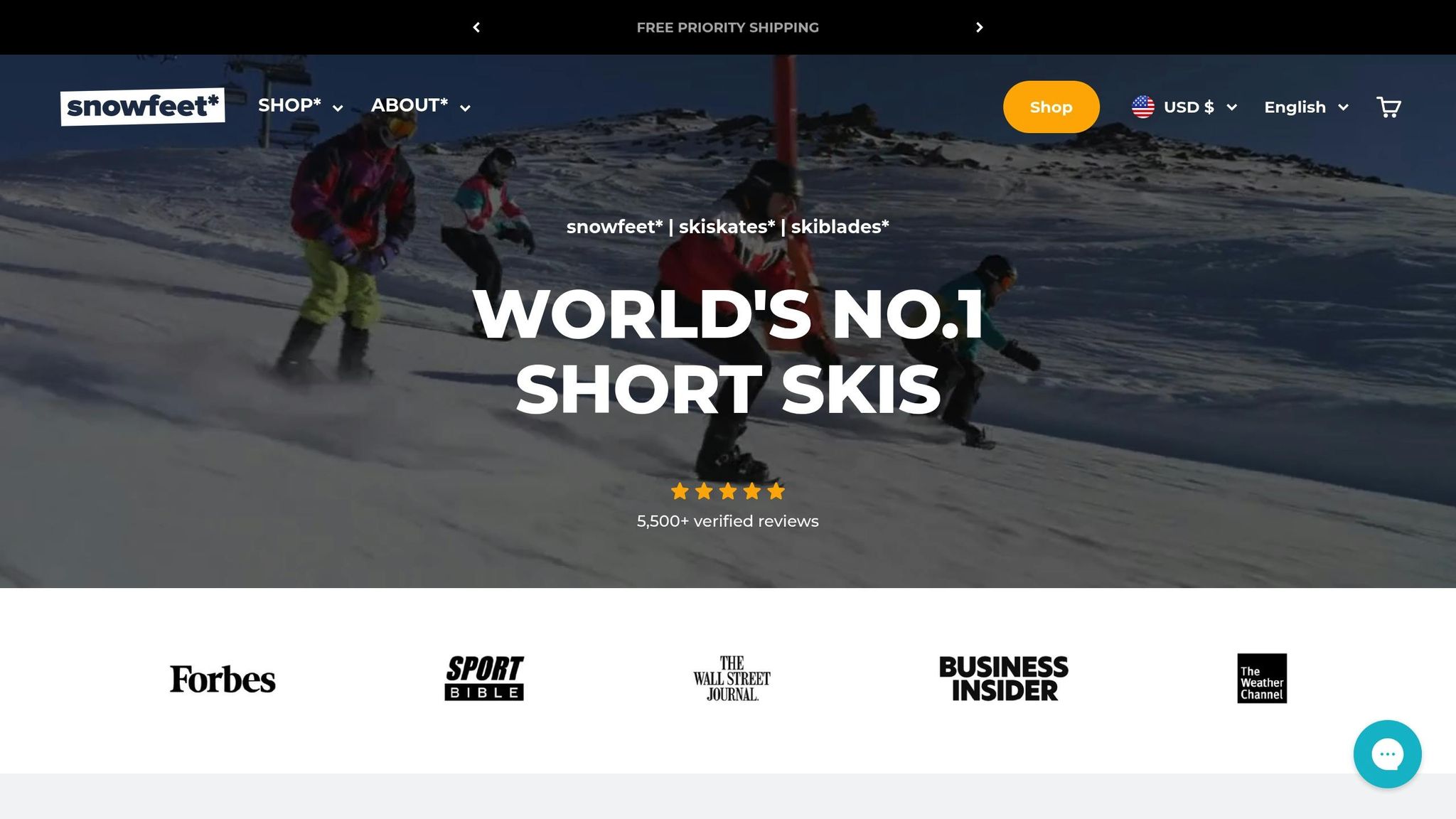
La oss snakke om hvorfor kortere ski, som de fra Snowfeet*, kan gjøre tiden din i bakkene mye mer moro. Mens mange tradisjonelle skimerker holder fast ved ideen om at lengre er bedre, snur Snowfeet* på det ved å fokusere på kompakte, bærbare design som handler om moro og bekvemmelighet.
Enkle å bære og bruke
Hvis du noen gang har slitt med tradisjonelle ski, kjenner du til kampen - klumpete bager, vanskelig oppbevaring og begrenset plass i bilen. Snowfeet* endrer alt dette. Ta for eksempel deres Mini Ski Skates. Med bare 38 cm lengde er de lette nok til å kastes i en vanlig ryggsekk. Ingen spesialutstyr eller bilmodifikasjoner nødvendig - bare ta dem med og dra.
Men det handler ikke bare om bærbarhet. Det lette, kompakte designet gjør det mye enklere å lære å stå på ski med Snowfeet*. Glem den bratte læringskurven med å håndtere lange, tunge ski. Med Snowfeet* kan nybegynnere lære det grunnleggende raskere og bruke mer tid på å faktisk nyte bakkene. I tillegg betyr deres enkelhet at de er klare til å takle en rekke snøforhold uten bryet med å bytte utstyr.
Fungerer på alle typer snø
Snowfeet* produkter er laget for å takle omtrent hvilken som helst snø du kaster på dem. I motsetning til tradisjonelle merker som Dynastar eller Elan, som ofte krever forskjellige ski for POWDER, carving eller all-mountain terreng, tilbyr Snowfeet* en én-størrelse-passer-de-fleste tilnærming. De fungerer godt på preparerte løyper, fersk POWDER eller til og med isete partier. Designet finner en balanse - gir nok flyt for mykere snø samtidig som det opprettholder kontroll på hardere underlag.
Deres smidige design skinner virkelig i trange områder som skogsløyper, kuleløyper og terrengparker. Selv avanserte skiløpere har bemerket at Snowfeet*s responsivitet kan overgå lengre ski i situasjoner som krever raske, presise bevegelser.
Lær raskere og ha det mer gøy
Kortere ski er ikke bare lettere å bære - de er også mer tilgivende. Nybegynnere opplever ofte at feil på kortere ski føles mindre skremmende, noe som hjelper med å bygge selvtillit. I stedet for å bekymre seg for å kontrollere tungt utstyr, kan de fokusere på den rene gleden ved å stå på ski.
For erfarne skiløpere åpner Snowfeet* en verden av lekne muligheter. Designet deres gjør trange svinger og kreative manøvrer enkle, og oppmuntrer skiløpere til å eksperimentere og utfordre grensene sine. Og siden Snowfeet* ikke er begrenset til tradisjonelle skibakker, kan du ta dem med på snødekte turstier, gjennom hagen din eller hvor som helst det er snø. Det betyr flere muligheter for vintermoro, uansett hvor du er.
Hvordan velge riktig skilengde
Å velge riktig skilengde handler ikke bare om tall - det handler om å finne det som passer for din høyde, vekt og ferdighetsnivå. Mens tradisjonelle skimerker ofte anbefaler lengre ski for fart og stabilitet, får kortere ski stadig mer oppmerksomhet for sine unike fordeler. Snowfeet* tar en annen tilnærming, med design som passer et bredt spekter av kroppstyper og ferdigheter, noe som gjør størrelsesprosessen mye enklere.
Bruke høyde- og vekt-tabeller
De fleste skimerker baserer seg på høyde- og vekt-tabeller, og anbefaler ski som varierer fra hake- til hodehøyde. Snowfeet* bryter med dette ved å tilby et mer fleksibelt design. Skiene deres er laget for å fungere godt på tvers av ulike størrelser og ferdighetsnivåer, så du trenger ikke å stresse med å finne den "perfekte" lengden. Dette gjør dem til et flott valg for familier eller grupper med varierende ferdigheter, siden ett sett ofte kan fungere for flere personer. Det er en enkel løsning som fjerner mye av gjettingen.
Å matche skilengde med ditt ferdighetsnivå
Din opplevelse i bakkene betyr mye når du skal velge skilengde. For nybegynnere er kortere ski ofte det beste valget fordi de er lettere å kontrollere, noe som gjør det enklere å få selvtillit tidlig. Etter hvert som du blir bedre, vil du merke at kortere ski også gir raskere svinger og mer presis håndtering - perfekt for å utforske ulike terreng. Enten du skjærer ned preparerte løyper eller navigerer i urbane snøområder, er Snowfeet*-designene laget for å støtte skiløpere på alle nivåer, og hjelper deg å utvikle ferdighetene dine samtidig som det er gøy og håndterbart.
Korte Ski vs. Lange Ski: Hva er Forskjellen?
Valget mellom korte og lange ski koker ned til hva du trenger. Lange ski utmerker seg i fart og stabilitet, mens korte ski handler om manøvrerbarhet og bekvemmelighet. Snowfeet* satser på det praktiske, med kompakte design som er lette å bære, oppbevare og bruke. Enten du kjører i bakken, går på tur i fjellet eller utforsker en snødekt by, gjør Snowfeet* utstyr det enkelt å nyte vintereventyr uten klumpete utstyr. Deres fokus på tilpasningsevne og enkelhet sikrer at du kan ha det gøy uansett hvor snøen tar deg.
sbb-itb-17ade95
Hvordan Velge Riktig Skibredde
Når det gjelder å velge riktig skibredde, handler det om å matche utstyret til din skistil og de forholdene du møter oftest. Akkurat som skilengden påvirker hvor lett det er å manøvrere, spiller midjebredden – altså det smaleste punktet på skien – en stor rolle for kontrollen din og hvor godt du flyter på snøen. La oss bryte det ned slik at du kan ta det beste valget for dine eventyr.
Midjebredde og Ytelse
Bredden på midjen på skiene dine påvirker direkte hvordan de oppfører seg. Smalere ski skinner på preparerte løyper, og gir raske kant-til-kant overganger og presis carving. På den andre siden er bredere ski ditt valg for å flyte gjennom dyp POWDER. Snowfeet* tar dette konseptet og lager utstyr med litt bredere design sammenlignet med tradisjonelle lange ski, noe som gir mer stabilitet og støtte – en spesielt stor fordel for nybegynnere. Dette gjennomtenkte designet gir deg balansert ytelse enten du cruiser på hard snø eller mykere forhold, alt uten å måtte håndtere flere par ski.
Det som gjør at Snowfeet* skiller seg ut, er hvor enkelt det er å finne riktig passform. Enten du suser ned preparerte løyper eller utforsker variert terreng, fungerer deres optimaliserte midjebredde sømløst i forskjellige miljøer.
Snowfeet* vs. Tradisjonelle Lange Ski
La oss sammenligne Snowfeet* med tradisjonelle lange ski når det gjelder midjebredde. Lange ski er ofte designet for spesifikke forhold – noen utmerker seg i fart på preparerte løyper, mens andre er laget for stabilitet i POWDER. Snowfeet* hopper over behovet for spesialisering ved å tilby utstyr som presterer jevnt på tvers av ulike omgivelser.
Denne allsidigheten gjør Snowfeet* til et flott valg for både nybegynnere og erfarne skiløpere. Det bredere, tilpasningsdyktige designet hjelper deg å gli sømløst mellom ulike terrengtyper, og gir deg selvtillit enten snøen er hardpakket eller fersk. I tillegg slipper du bryet med å bytte utstyr hver gang forholdene endrer seg.
Snowfeet* skinner også i urbane skieventyr. Tenk deg å takle alt fra pakket snø til dypere snøfonner på én tur – tradisjonelle ski kan slite, men Snowfeet* håndterer alt med letthet. Deres smarte design sørger for at du er klar for hva enn dagen måtte bringe, noe som gjør dem til et pålitelig og fleksibelt valg for enhver skiløper.
Snowfeet* Produktguide og Størrelsesvalg
Videreutvikling av det grunnleggende innen skistørrelser, tilbyr Snowfeet* en serie designet for å møte behovene til alle typer skiløpere. Med priser fra $170 til $1,115 gir Snowfeet* et kostnadseffektivt alternativ til tradisjonelle skioppsett.
Oversikt over Snowfeet*-modeller
Snowfeet*-kolleksjonen passer for alle - fra helt nybegynnere til erfarne skiløpere som ser etter et kompakt og morsomt alternativ til standard lange ski.
- Mini Ski Skates (38 cm): Fra $243, er disse perfekte for førstegangsbrukere eller alle som ønsker et ultrabærbart alternativ. Du kan putte dem i en ryggsekk, og de fungerer med dine vanlige vintersko - flott for spontane snøeventyr eller urbansk skiing.
- Ski Skates (44 cm): Prisene ligger mellom $630 og $727, og denne modellen balanserer smidighet og stabilitet. Med en kjerne av tre tilbyr de en solid følelse som står godt mot tradisjonelle ski.
- Skiblades (65 cm): Fra $727, gir disse mer overflateareal for bedre flyt i ulike snøforhold. De er et solid valg for mellomnivå skiløpere som takler brattere terreng samtidig som de nyter fordelene med kortere ski.
- POWDER (99 cm): Fra $792, er disse laget for dyp snø. Selv om de er mye kortere enn typiske powder-ski (som vanligvis er rundt 180–190 cm), sikrer deres bredde og design utmerket flyteevne.
- Short Skis (120 cm): Til $1,115 er disse de lengste i serien, og bygger bro mellom Snowfeet* og tradisjonelle ski. De beholder bærbarheten og brukervennligheten som definerer Snowfeet*-produkter.
- MINI KIDS: Designet for barn med skostørrelser under 6 US, tilbyr dette $322-alternativet en lett og tilgjengelig måte for unge skiløpere å komme i gang uten tyngden av lengre ski.
Hvordan bruke Snowfeet*-størrelsesguiden
Å finne riktig Snowfeet*-modell avhenger av ditt ferdighetsnivå, terrenget du skal gå på, og hvor mye du verdsetter bærbarhet versus ytelse.
- Begynnere: 38 cm Mini Ski Skates eller 44 cm Ski Skates er ideelle. Deres kortere lengde gjør dem tilgivende og enklere å kontrollere sammenlignet med tradisjonelle 160–180 cm ski, som kan føles skremmende for nybegynnere.
- Mellomnivå skiløpere: For allsidighet på ulike snøforhold tilbyr 65 cm Skiblades eller 99 cm POWDER-modeller en stabil og responsiv kjøreopplevelse.
- Erfarne skiløpere: Hvis du er vant til tradisjonelle lange ski, gir 99 cm POWDER eller 120 cm Short Skis en mer kjent følelse samtidig som de tilbyr fordelene med kortere ski.
Snowfeet*-modeller er designet med fleksibilitet i tankene, noe som gjør dem tilgjengelige for et bredt spekter av brukere. Dette bringer oss til hvorfor kortere ski ofte overgår sine lengre motstykker.
Hvorfor korte ski slår lange ski
Snowfeet* snur opp ned på ideen om at lengre ski alltid er bedre. Her er hvorfor kortere ski kan gi en eksepsjonell opplevelse:
- Bærbarhet: Snowfeet* modeller passer pent i en ryggsekk, i motsetning til klumpete ski på 170+ cm som krever egne skibager eller stativer.
- Allsidighet: Disse skiene er ikke begrenset til bakkene. Enten du cruiser på preparerte løyper, går tur i snødekte stier, eller bare nyter hagen etter et ferskt snøfall, tilpasser Snowfeet* seg øyeblikket - noe tradisjonelle ski sliter med.
- Sikkerhet: Kortere ski er lettere å håndtere, og fall er som regel mindre dramatiske. De reduserer risikoen for klønete vektbelastning under et fall, noe som gjør opptrappingen enklere - spesielt nyttig for nybegynnere.
- Kostnadseffektivitet: Et komplett tradisjonelt oppsett (ski, bindinger, støvler, staver) kan lett koste $1,200–$2,000. De fleste Snowfeet* modeller er priset godt under dette og fungerer med støvler du sannsynligvis allerede eier.
Snowfeet* beviser at korte ski ikke bare er et kompakt alternativ - de er et smartere valg for mange skiløpere.
Konklusjon: Finn din perfekte passform
Den gammeldagse ideen om at lengre ski alltid er bedre begynner å føles litt, vel, utdatert. Moderne skidesign handler om kortere alternativer som gir bedre ytelse og mer moro. Ta Snowfeet* som et eksempel. Deres sortiment spenner fra de superkompakte 38 cm Mini Ski Skates ($243) til 120 cm Short Skis ($1,115). Dette er ikke bare ski - det er en ny måte å nyte bakkene på.
Snowfeet* snur opp ned på tradisjonelt skiutstyr. I stedet for tungt, klønete utstyr som krever spesielle støvler, tilbyr de lette, ryggsekkvennlige ski du kan bruke med dine vanlige vintersko. Det handler ikke bare om bekvemmelighet - det handler om å gjøre ski mer tilgjengelig og, ærlig talt, mye morsommere.
"Nei, men jeg støtter fullt ut at folk ikke tar ski seriøst og kjører det som er gøy og tøyser rundt." - StarchyVeg
I årevis har merker som Rossignol, Salomon og K2 promotert ideen om at lengre ski gir bedre ytelse. Men som vi har sett, kommer kortere ski med store fordeler: de er enklere å lære på, lettere å transportere, og fungerer godt i alle slags snøforhold. I tillegg er de mye snillere mot lommeboken. Et tradisjonelt skioppsett kan koste mellom $1,200 og $2,000, mens de fleste Snowfeet* modeller er priset godt under det.
Folk begynner også å få med seg dette skiftet i prioriteringer. Det handler mindre om å følge gamle regler og mer om å ha det gøy:
"Men for folk som har en hytte på et skianlegg, klokken 2 om natten etter noen øl, ville disse vært supermorsomme å leke med på en nylig preparert grønn løype." - Avalanche_Debris
Til syvende og sist handler det å finne de riktige skiene om hva som virkelig betyr noe for deg: bærbarhet, brukervennlighet, allsidighet, og ikke minst, å ha det gøy i snøen. Snowfeet* oppfyller alle disse kravene samtidig som de utfordrer skiindustriens besettelse med lengde og kompleksitet. Fremtiden for ski? Den er kortere, enklere, og mye mer moro.
Ofte stilte spørsmål
Hvordan velger jeg riktig skilengde og bredde for mitt ferdighetsnivå og typen terreng jeg skal gå på?
Å finne riktig skilengde og bredde handler om en blanding av faktorer: din høyde, ferdighetsnivå og typen terreng du liker. Her er en rask oversikt:
- Nybegynnere bør holde seg til kortere ski som ligger et sted mellom hake- og neselengde. Kortere ski er lettere å kontrollere og gjør læringen mindre skremmende.
- Erfarne skiløpere tenderer derimot ofte mot lengre ski. Disse gir bedre stabilitet og fart, spesielt i mer utfordrende løyper.
- Når det gjelder bredde, skinner smalere ski på preparerte løyper og er flotte for raske, presise svinger. Samtidig er bredere ski ditt valg for powderdager eller mykere snøforhold.
Vil du ha noe litt annerledes? Sjekk ut Snowfeet skiblades. Disse kompakte, lette skibladene handler om moro og enkelhet. De er superportable og perfekte for nybegynnere eller alle som ønsker en problemfri, hyggelig dag i bakkene. I tillegg gjør deres allsidighet dem til et unikt alternativ til tradisjonelle ski eller snowboard.
Hva gjør Snowfeet* ski bedre enn tradisjonelle lange ski?
Snowfeet* ski skinner fordi de er portable, enkle å bruke og utrolig allsidige - et flott alternativ til tradisjonelle lange ski. Deres kompakte størrelse betyr at du kan kaste dem i en ryggsekk eller gjemme dem i bilens bagasjerom uten behov for takstativ eller å håndtere klumpete utstyr. Perfekt for spontane vinterturer eller raske turer til bakkene.
Det som virkelig skiller Snowfeet* ut, er hvor lette og enkle de er å kontrollere. Dette gjør dem til et godt valg for nybegynnere eller alle som ønsker en mer avslappet og leken tid i snøen. De er mindre skremmende enn lange ski og krever mindre innsats, så du kan være ute lenger uten å bli sliten. Designet for alle aldre, tilbyr de en morsom og tilgjengelig måte å nyte vintersport på uten å bruke timer på å lære. Hvis du er ute etter en kompakt og avslappet måte å nyte bakkene på, kan Snowfeet* være ditt nye favorittutstyr.
Hvor godt presterer Snowfeet* ski på forskjellige terreng og snøforhold?
Snowfeet* ski skinner på preparerte løyper og pakket snø, og tilbyr god kontroll og jevn håndtering. De er laget for raske svinger og raske reaksjoner, noe som gjør dem til et solid valg for fritidsskiløpere som verdsetter smidighet.
Når det er sagt, er ikke disse skiene det beste valget for dyp POWDER eller topptureventyr, hvor tradisjonelle ski eller snowboard ofte dominerer. Men hvis du er ute etter et morsomt, kompakt og problemfritt alternativ for dine vanlige turer, er Snowfeet* ski en fantastisk løsning!







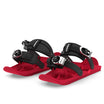
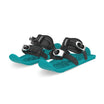












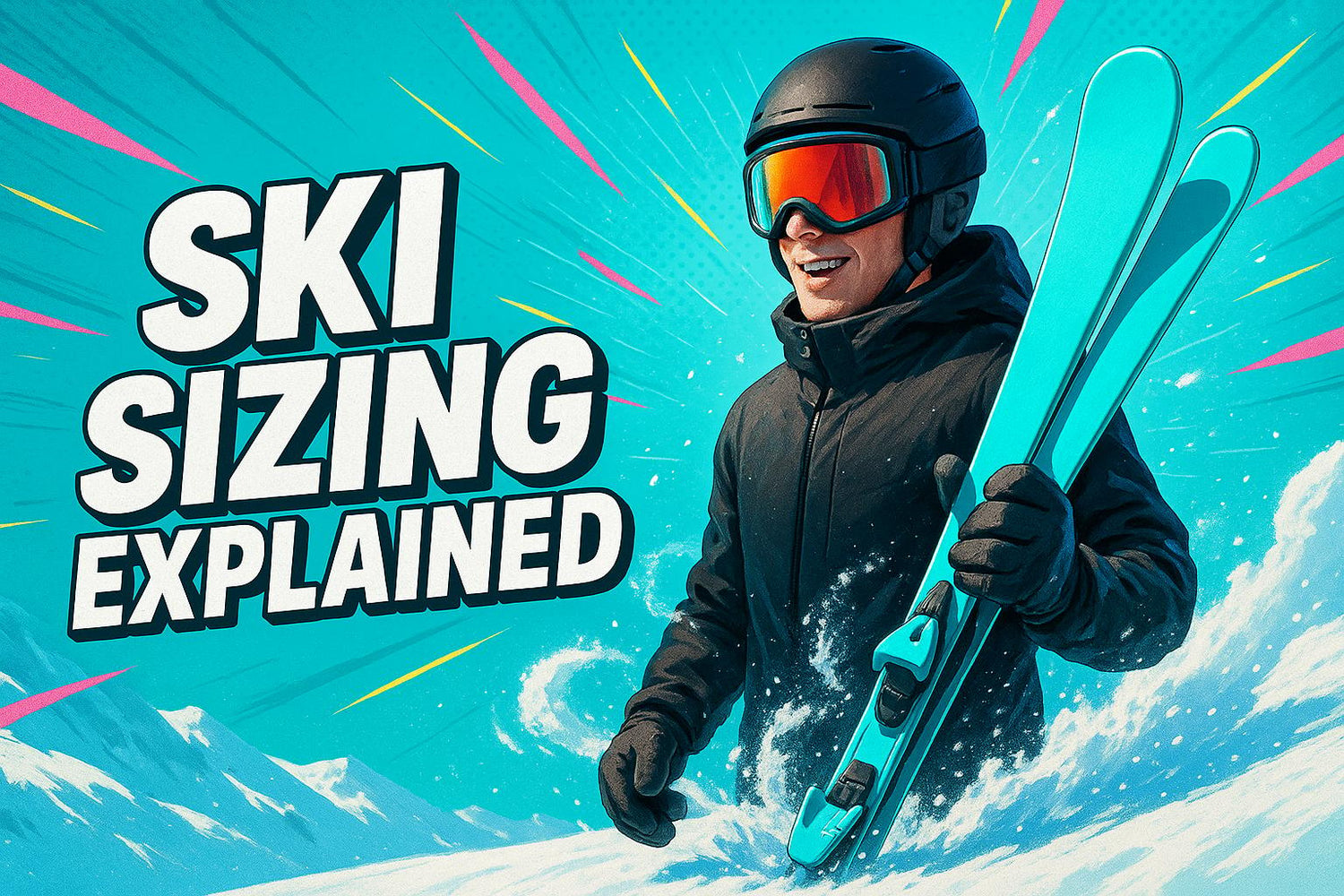
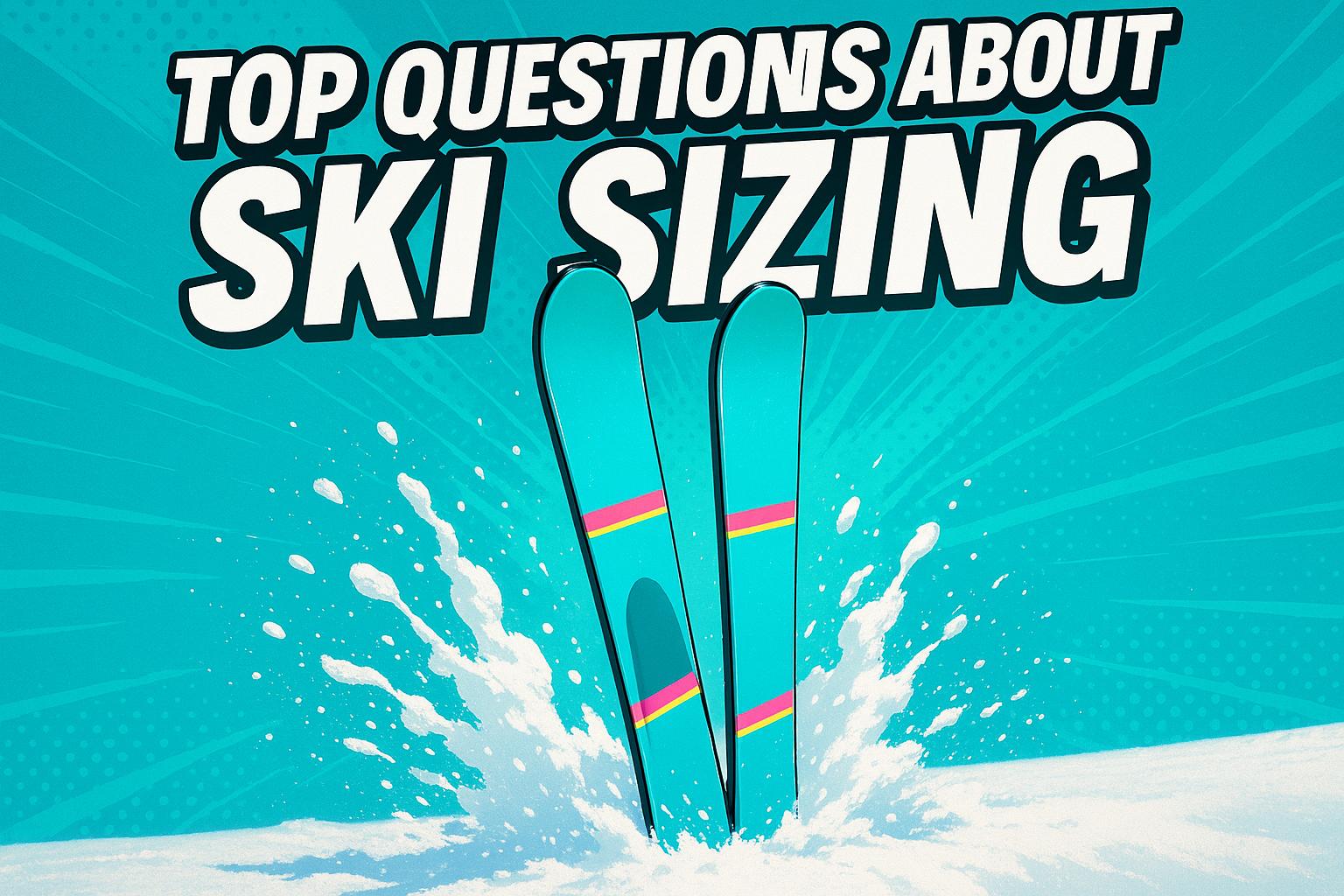
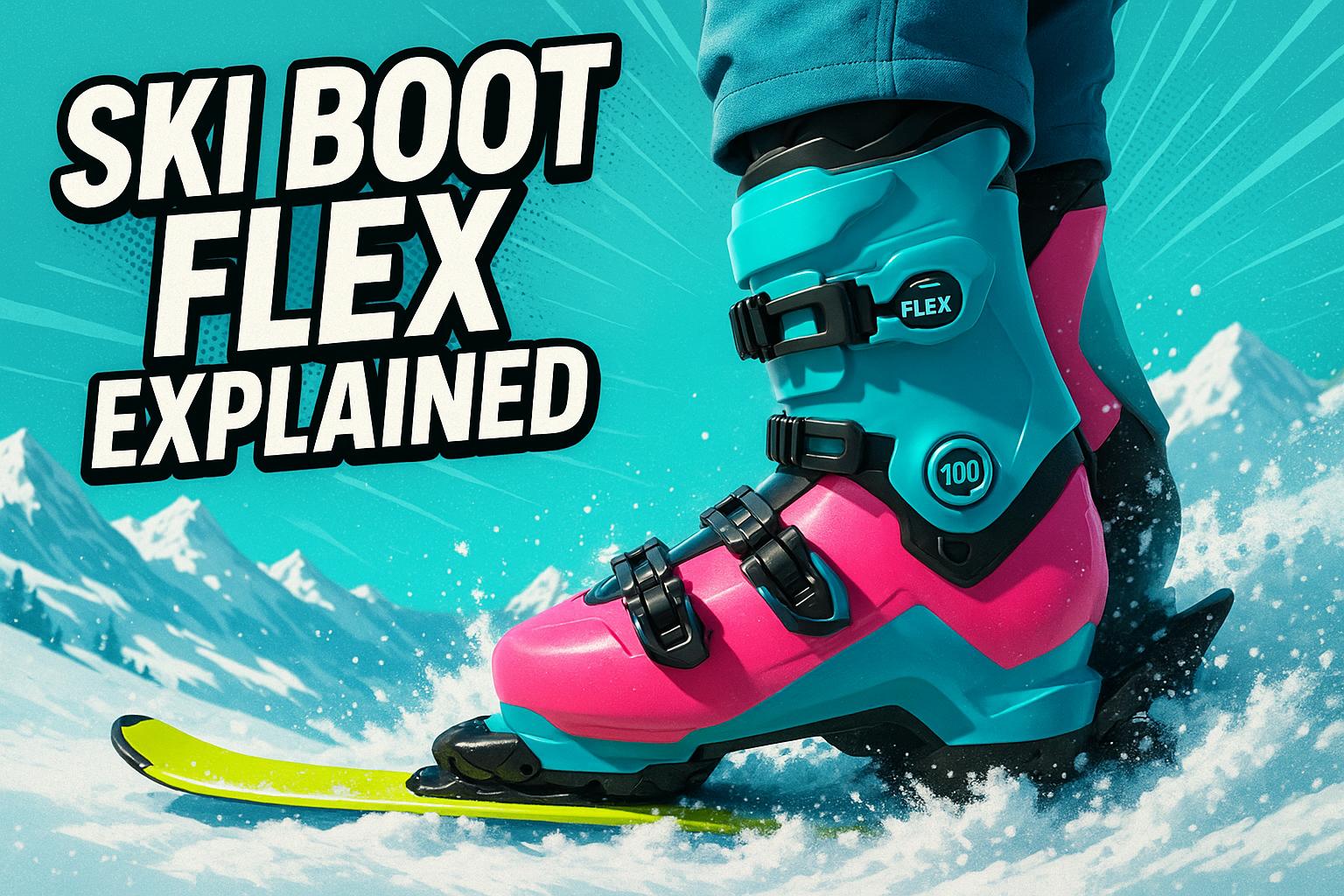




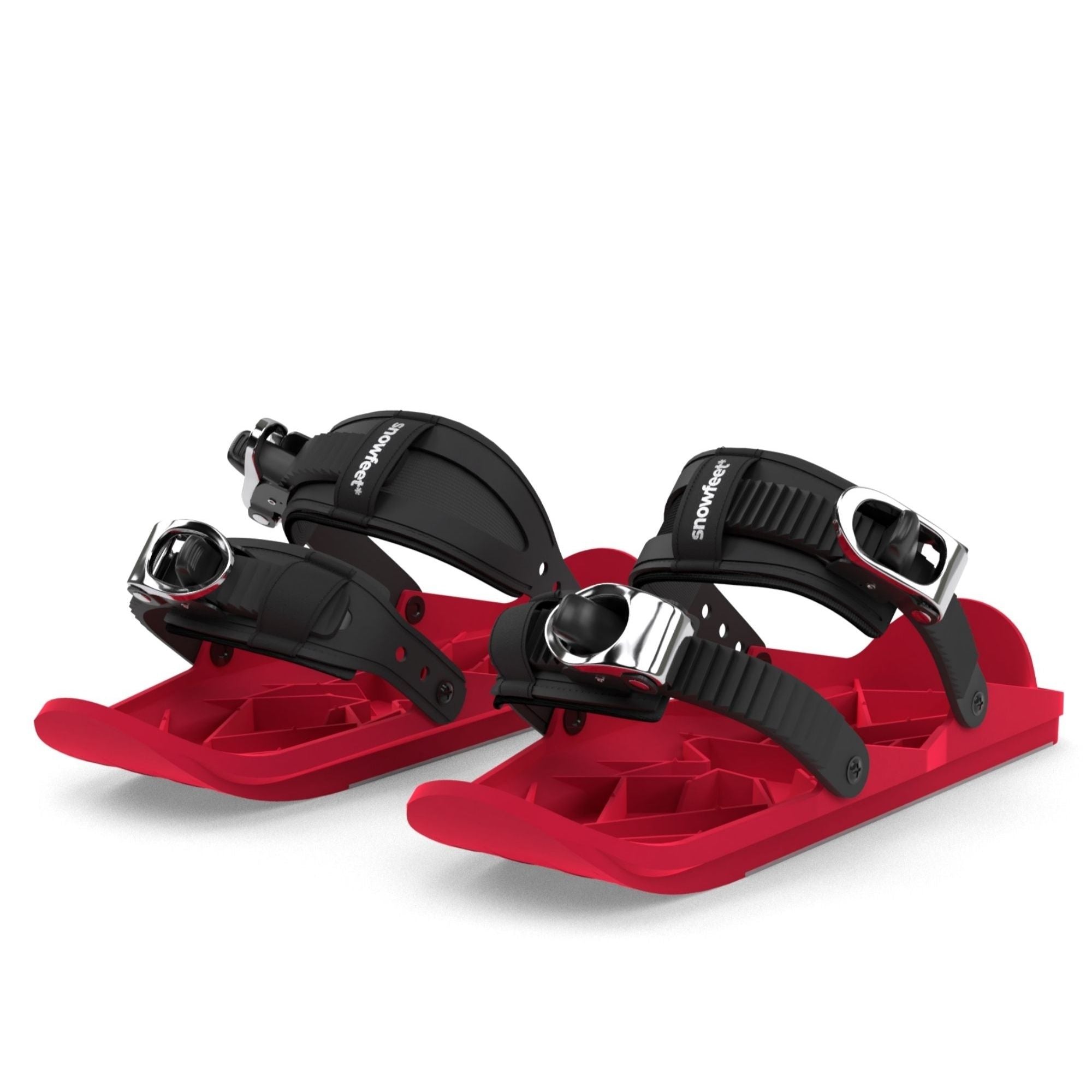
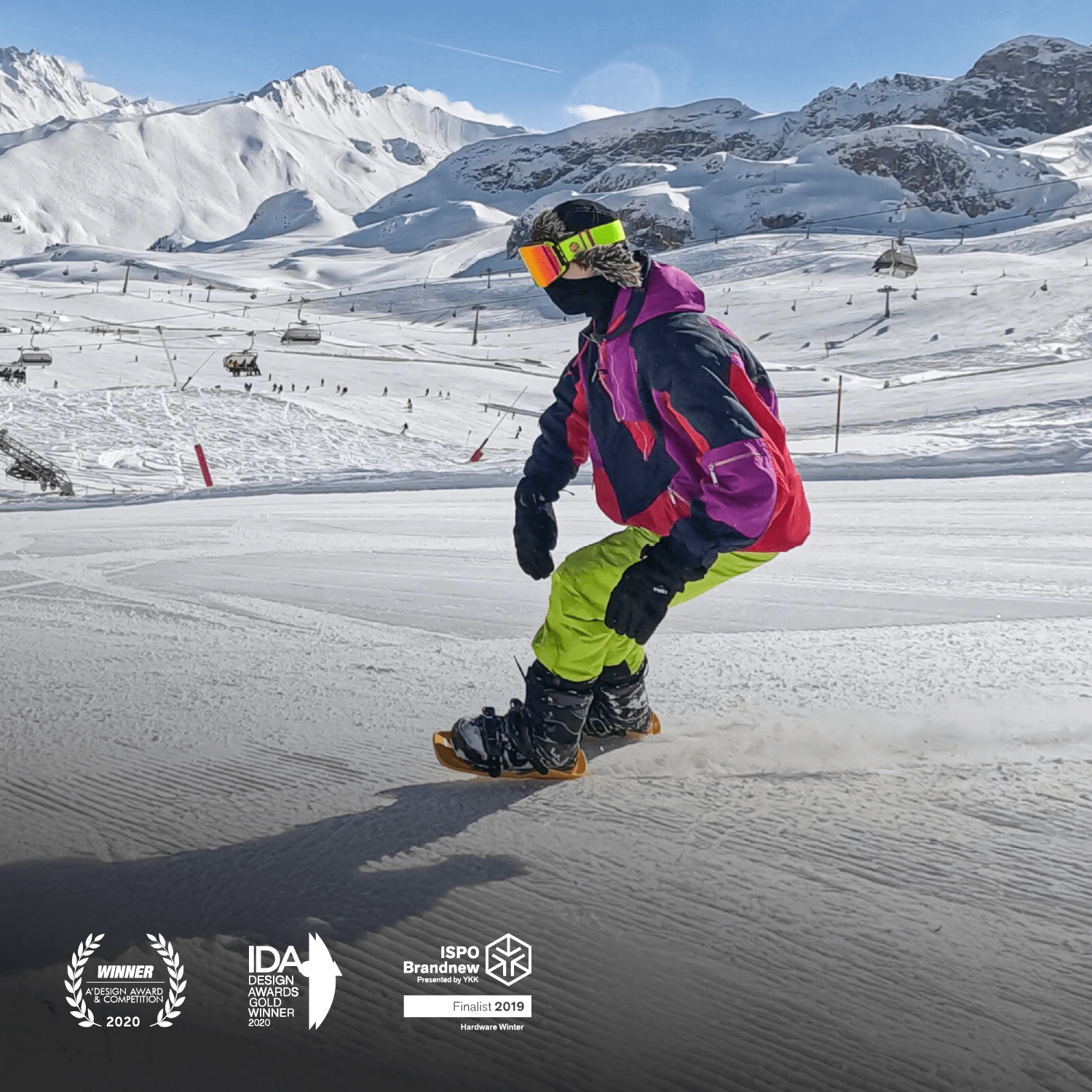




Legg igjen en kommentar
This site is protected by hCaptcha and the hCaptcha Privacy Policy and Terms of Service apply.